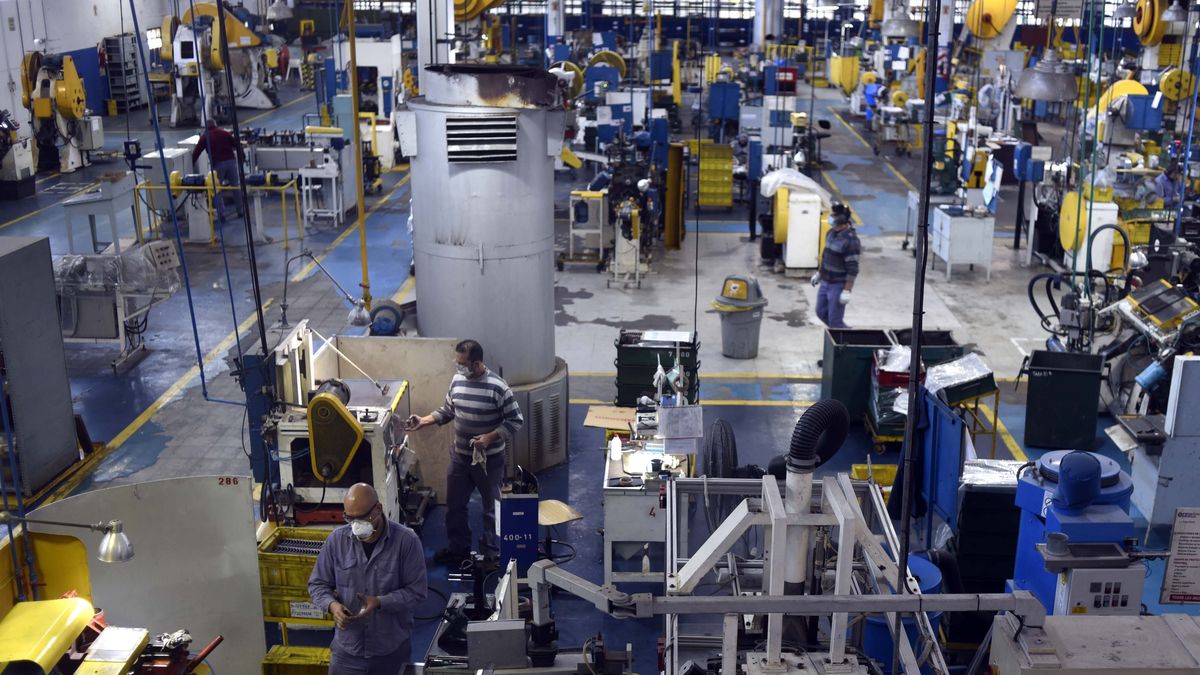He Industrial Production Index (IPI) of FAITHFUL In November it marked an interannual decline of 2.3%, but in the seasonally adjusted measurement it had a monthly improvement of 1% in November.
On a year-on-year basis, tThree sectors had an improvement in activity. “The greatest progress was shown by the block of food and drinksa branch within which the growth in food production, mainly due to the contribution of flours and oils, more than compensated for the deterioration in the beverage sector, which shows generalized falls,” FIEL explained.
The second block with year-on-year improvement in production corresponded to the chemicals and plastics, which “combined the effect of a low comparison base a year ago in some activities with the advance of production in view of scheduled shutdowns towards December in others,” the report added.
Also oil refining presented a slight year-on-year advance due to the contribution of refineries with lower installed capacity. Instead, heto automotive industrywhich in October had had an increase in production compared to the previous year, failed to repeat the mark, howeverIn November it reached the highest level of activity so far this year.
“Vehicle exports once again showed year-on-year progress due to the increase in shipments to Brazila destination that accumulates five months of growth compared to the previous year. Wholesale sales of vehicles from terminals to dealerships had another marked increase in November, chaining five months of increase, although registrations fell during the month after three months of improvement. “In the month, the greatest decline was once again seen in the production of non-metallic minerals – mainly construction inputs, chaining thirteen months of contraction in production,” they added.
In the first eleven months of 2024 and in comparison with the same period last year, the industry accumulates a drop of 8.4%FIEL revealed. Among the branches of activity, the greatest contraction accumulated between January and November in the year-on-year comparison was recorded by non-metallic mineral productions (24.3%) followed by automotive production (18.4%). The remaining branches that show a more pronounced decline than the industry average are basic metal (16.7%), the metalworking (15.4%), that of chemical and plastic inputs (10.4%) and cigarette dispatches (10.3%), in all cases in the first eleven months and in comparison with the same period last year.
With a smaller than average contraction, the production of paper and cellulosea with a decrease of 5.5% on the same basis of comparison. The production of textile inputs (0.3%) and that of food and drinks (0.2%) equal in the first eleven months of the year the level of activity reached in the same period of 2023. Finally, Oil refining accumulated an advance of 0.8% between January and November in the year-on-year comparison.
With the above, “the greatest contribution to the contraction of the industry in the first eleven months of the year continues to be made by metalworking, which together with the automotive branch, the chemicals and plastics branch, and the non-metallic minerals branch.“they account for three quarters of the industry’s decline in the first eleven months of the year,” he revealed. FAITHFUL.
From the perspective of the type of goods produced, all of them register a drop in the first eleven months in comparison with the January-November period of last year. The greatest contraction is shown in the production of durable consumer goods, which has accumulated a decline of 17.6%, followed by that of capital goods, which has accumulated a decrease of 14.1%, and that of intermediate use goods, with a drop of 8 .5% and that of non-durable consumer goods with a decrease of 1.5%.
“However, all types of goods reduce the pace of contraction in eleven months in comparison with the decline registered between January and October, and since August it is capital goods that have made the greatest reduction in the accumulated decline. Finally, In November, non-durable consumer goods contribute to the recovery of aggregate industrial activity,” they expressed from FIEL
Month versus month: how November fared compared to October
In seasonally adjusted terms, Industrial production in November showed an increase of 1% compared to Octoberand has accumulated an improvement of 6.8% since April, which reaches 12% annual equivalent. “The signs that the industry is undergoing a recovery were strengthened with an improvement in the dynamics since September when activity recovers above the long-term trend. At the same time, the progress of the sectoral diffusion of the recovery continues, which in the September-November quarter it exceeded 30% of the industry,” they expressed from the report.
In seven months and in the comparison with the ten phases of recovery of the industry since 1980 according to data from the IPI of FIEL, The current phase has a dynamic below average (16.2% annual equivalent) but exceeds the expansions that began in April 1999, August 2014 and September 2016.
In summary, from FIEL, they explained that “industrial activity in the month of November registered a decline in the year-on-year comparison, with three branches showing an improvement –food and beverages, chemical and plastic inputs and oil refining. In eleven months, activity continues to reduce the accumulated decline and oil processing accumulates slight growth compared to the same period in 2023. EIn seasonally adjusted terms, the industry made new progress compared to the previous month, strengthening the signs that indicate that the industry has been on a recovery path since April.”.
Source: Ambito
I am an author and journalist who has worked in the entertainment industry for over a decade. I currently work as a news editor at a major news website, and my focus is on covering the latest trends in entertainment. I also write occasional pieces for other outlets, and have authored two books about the entertainment industry.




